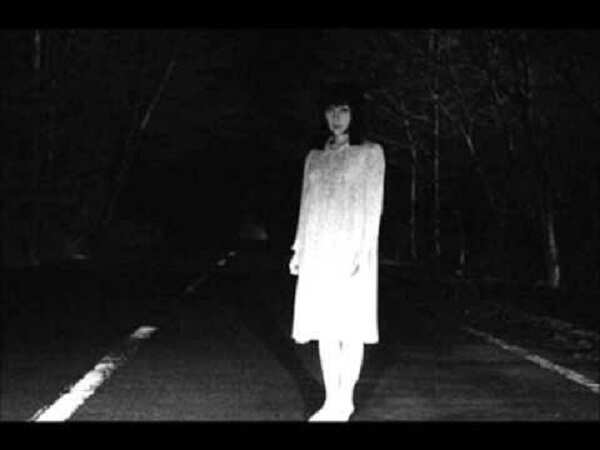The story of Teresa Fidalgo has been circulating on the internet, capturing the attention of many. But who is Teresa Fidalgo, and is there any truth behind this ghost story? In this blog post, we will delve into the origins of this tale and debunk the false claims surrounding it. Let’s separate fact from fiction and explore the intriguing world of Teresa Fidalgo.
Overview of the Teresa Fidalgo Ghost Story
The Teresa Fidalgo ghost story has captivated the internet with its chilling tale and seemingly supernatural elements. It all began with a viral video called “A Curva,” created by Portuguese producer David Rebordão. This found footage-style short film follows a group of friends driving through the mountains as they encounter a hitchhiker named Teresa Fidalgo.
The Origin of the Story
In the video, Teresa Fidalgo remains mostly silent but eventually directs the group’s attention to a spot on the road where she supposedly died. Suddenly, her face becomes bloodied, and the car crashes. The video gained significant attention and sparked curiosity among viewers.
Major Plot Points
What sets the Teresa Fidalgo ghost story apart is the specificity of the character and her supposed connections to a real accident on a Portuguese road. This aspect has intrigued many easily-scared teenagers who have become engrossed in the tale.
Despite the story’s sensationalist appeal, it is important to approach it with a healthy dose of skepticism. It’s unlikely that a teenage ghost with the ability to haunt people through social media exists. Furthermore, the fact that Teresa Fidalgo’s name is subject to auto-correct errors (as seen on Instagram) diminishes the credibility of the story.
Fortunately, David Rebordão, the director behind “A Curva,” has confirmed that the entire story is fictitious. Rebordão expressed surprise at the story’s enduring popularity and even mentioned that he is seeking funding for new scripted films.
While the Teresa Fidalgo ghost story may continue to circulate and spark fear among those who come across it, it’s important to remember that it is simply a work of fiction meant to entertain and thrill audiences.
Understanding the Virality of the Teresa Fidalgo Story
The Teresa Fidalgo ghost story has garnered significant attention on the internet, spreading like wildfire across various social media platforms. In this section, we will explore the role of social media in amplifying the story’s reach and the psychological reasons behind its immense popularity.
Role of Social Media in Spreading the Story
Social media platforms have played a crucial role in the rapid dissemination of the Teresa Fidalgo story. With the power of instant sharing, users can easily repost or retweet the story, exponentially increasing its visibility. The story often presents itself as a warning or a dare, compelling individuals to share it further to avoid any potential consequences. This viral aspect creates a sense of urgency and spreads the story like a digital chain letter.
Moreover, social media platforms provide the perfect breeding ground for rumors and urban legends to flourish. The anonymous nature of online interactions allows for the story to be shared without accountability or verification. As a result, the Teresa Fidalgo tale quickly becomes intertwined with personal anecdotes, adding to its perceived authenticity and captivating a larger audience.
Psychological Reasons for the Story’s Popularity
The popularity of the Teresa Fidalgo story can be attributed to various psychological factors that captivate and intrigue individuals. Here are a few key reasons behind its immense appeal:
- Fear and Thrill: People are often drawn to stories that evoke fear and thrill. The suspenseful nature of the Teresa Fidalgo tale, with its chilling descriptions and mysterious origin, taps into our innate fascination with the supernatural. It triggers a sense of excitement and curiosity, compelling individuals to share and discuss it further.
- Curiosity and Mystery: Humans have an inherent desire to solve mysteries and uncover the truth. The ambiguity surrounding the authenticity of the Teresa Fidalgo story creates a sense of intrigue and keeps people hooked. They want to dig deeper, find evidence, and understand the real story behind the spooky legend.
- Group Psychology and Social Proof: The Teresa Fidalgo story gains momentum through the psychological phenomenon of social proof. As more individuals share and engage with the story, it creates a sense of validation and credibility. People tend to trust information that comes from their social circles, and when their peers share the story, it reinforces its legitimacy in their minds.
- Emotional Connection: The story of Teresa Fidalgo presents emotional elements, such as tragedy and loss, that resonate with many individuals. Emotional engagement makes the story more relatable and memorable, leading to increased sharing and discussion.
In conclusion, the virality of the Teresa Fidalgo ghost story can be attributed to the influential role of social media in spreading its message and the psychological factors that make it captivating and shareable. The combination of fear, curiosity, group psychology, and emotional connection contributes to the story’s immense popularity.
Unveiling the Truth Behind Teresa Fidalgo
The Teresa Fidalgo story has gained significant attention and intrigue on the internet, captivating many with its supposed ghostly encounters. However, it is important to approach such stories with a critical eye and examine the discrepancies and evidence that raise doubts about its authenticity. In this section, we will delve into the inconsistencies in the Teresa Fidalgo story and explore the evidence that contradicts the ghostly claims.
Discrepancies in the Teresa Fidalgo Story
- Inconsistent Versions: One of the major red flags in the Teresa Fidalgo story is the existence of multiple versions with conflicting details. Different retellings vary in crucial aspects such as the location of the accident, the number of victims, and the circumstances surrounding Teresa’s supposed appearance. Such inconsistencies raise questions about the story’s credibility and suggest that it may have been fabricated or distorted over time.
- Lack of Historical Documentation: Despite the widespread circulation of the Teresa Fidalgo story on the internet, there is a notable absence of credible historical documentation supporting its claims. Ghost stories and urban legends often rely on firsthand accounts or documented evidence to lend credibility to their narratives. In the case of Teresa Fidalgo, the lack of supporting evidence adds to the skepticism surrounding the story.
- Similarities to Other Urban Legends: The Teresa Fidalgo story shares striking similarities with other urban legends and ghost stories that have circulated in different cultural contexts. This resemblance raises the possibility that the tale of Teresa Fidalgo has been adapted from existing legends or simply created as a work of fiction to captivate and frighten audiences.
Evidence Against the Ghost Story
- Internet Hoax and Viral Marketing: It has been suggested that the Teresa Fidalgo story originated as an internet hoax or a viral marketing campaign to promote a movie or a website. This theory gains traction when considering how the story gained popularity primarily through online platforms and social media. The motive behind such campaigns is often to generate buzz and attract attention, rather than to present a genuine paranormal phenomenon.
- Analysis of Video Footage: The most famous piece of evidence linked to the Teresa Fidalgo story is a video that purportedly captures her ghostly appearance. However, when subjected to analysis, some experts have identified inconsistencies and anomalies that suggest the video has been manipulated or staged. Visual effects, editing techniques, and the use of actors can all contribute to the creation of a convincing ghostly encounter.
- Psychological Explanations: Many aspects of the Teresa Fidalgo story can be better understood through psychological explanations rather than supernatural ones. Human perception is known to be fallible, and our minds can be easily influenced by suggestion, fear, and the power of suggestion. It is possible that witnesses or participants in the story may have misinterpreted or embellished their experiences, leading to the creation of a ghostly narrative.
While the Teresa Fidalgo story continues to intrigue and captivate audiences, it is essential to approach it with a critical mindset. The discrepancies in the story and the evidence against its authenticity suggest that it may be more fiction than fact. Engaging in thoughtful analysis and scrutiny helps us separate urban legends from genuine paranormal encounters, ensuring that we navigate the world of ghost stories with discernment and clarity.
Who Really is Teresa Fidalgo?

Teresa Fidalgo is a name that has gained significant attention in recent years due to its association with a viral ghost story. However, it is crucial to distinguish between the real-life incidents associated with the name and the fictional character created as part of an elaborate urban legend.
Real-life Incidents Associated with the Name
While the fictional character of Teresa Fidalgo has captured the imagination of many, it is important to note that there have been actual incidents involving individuals by that name. These incidents do not correlate with the ghost story but are independent occurrences involving real people.
The Fictional Character in Detail
The Teresa Fidalgo ghost story originated from a viral video that purported to capture a haunting encounter. According to the story, Teresa Fidalgo was a young Portuguese woman who tragically lost her life in a car accident. The video, titled “A Curva,” claimed to show the supposed ghost of Teresa Fidalgo haunting the location of her fatal crash.
However, it is crucial to recognize that the video was, in fact, a work of fiction created by Portuguese filmmakers as part of a marketing campaign for a horror movie. The video was deliberately designed to appear genuine, aiming to stir curiosity and generate buzz around the movie release.
The fictional character of Teresa Fidalgo, as portrayed in the video, has since gained traction on the internet as an urban legend. Numerous adaptations, retellings, and interpretations of the ghost story have emerged, often blurring the lines between fact and fiction.
It is essential to approach stories surrounding Teresa Fidalgo with skepticism and critical thinking, recognizing that the character is a work of fiction created for entertainment purposes rather than a real supernatural entity.
In conclusion, Teresa Fidalgo is both a name associated with real individuals and a fictional character at the center of a widely circulated ghost story. Understanding the distinction between the real-life incidents and the fictional portrayal is crucial to debunking the urban legend and appreciating the power of storytelling in the digital age.
The Impact of Fake Ghost Stories on Society
In a world filled with myths, legends, and urban legends, fake ghost stories have managed to captivate the collective imagination of society. These tales of apparitions, hauntings, and supernatural encounters have profoundly influenced various aspects of our lives, from our deep-rooted fears and superstitions to the very fabric of our culture and media.
Influence on Fear and Superstition
Fake ghost stories have an undeniable impact on the human psyche, particularly when it comes to fear and superstition. These tales exploit our instinctual fear of the unknown and tap into our inherent belief in the existence of the supernatural. When shared, these stories often spread like wildfire, igniting a sense of dread and curiosity within us.
Due to their persuasive nature, fake ghost stories have the ability to instill a deep-seated fear of the supernatural in individuals, leading to lingering doubts, anxiety, and even irrational behavior. They perpetuate superstitions, reinforcing beliefs in haunted places, cursed objects, and paranormal phenomena.
The power of these stories lies in their ability to blur the line between reality and fiction, leaving individuals questioning what they see and experience. The fear generated by fake ghost stories can linger for extended periods, shaping people’s perception of the world around them.
Impact on Culture and Media
From folklore to modern-day horror films, fake ghost stories have left an indelible mark on our cultural landscape. They have become a source of inspiration for artists, writers, and filmmakers looking to explore the darker side of human existence. The popularity of these stories has spawned an entire genre in the entertainment industry, fueling a constant demand for spooky tales and supernatural narratives.
In literature, fake ghost stories have become a staple of the horror genre, with authors using them to create suspense, mystery, and a thrilling sense of the unknown. They provide a rich source of material for storytelling, allowing writers to delve into the depths of human emotions and the complexities of the human psyche.
In the realm of cinema, fake ghost stories have given birth to countless horror movies that continue to draw audiences seeking a good scare. These films capitalize on the fear factor, employing special effects, eerie soundtracks, and suspenseful storytelling techniques to elicit intense emotional responses from viewers.
Furthermore, the prevalence of fake ghost stories in popular culture has led to the rise of ghost hunting shows, paranormal investigations, and online communities dedicated to exploring and debunking supernatural claims. These platforms offer individuals a sense of belonging, allowing them to discuss their own experiences and seek rational explanations for unexplained phenomena.
In conclusion, fake ghost stories exert a profound influence on society’s collective mindset. By exploiting our fears and superstitions, they shape the way we perceive the supernatural and impact our cultural expressions through literature, film, and various forms of media. It is essential to approach these stories with a critical mindset, separating fact from fiction in order to foster a deeper understanding of the mysterious and the inexplicable.
Conclusion
In conclusion, Teresa Fidalgo is not a real ghost but rather a fictional character created for an internet hoax. The story gained popularity through a viral video claiming to show a ghostly encounter with Teresa. However, upon further investigation, it is clear that the video was staged and the entire story is a fabrication. It is important to be critical of the content we come across on the internet and not fall prey to sensationalized tales. By debunking fake ghost stories like Teresa Fidalgo, we can foster a more informed and rational online community.






